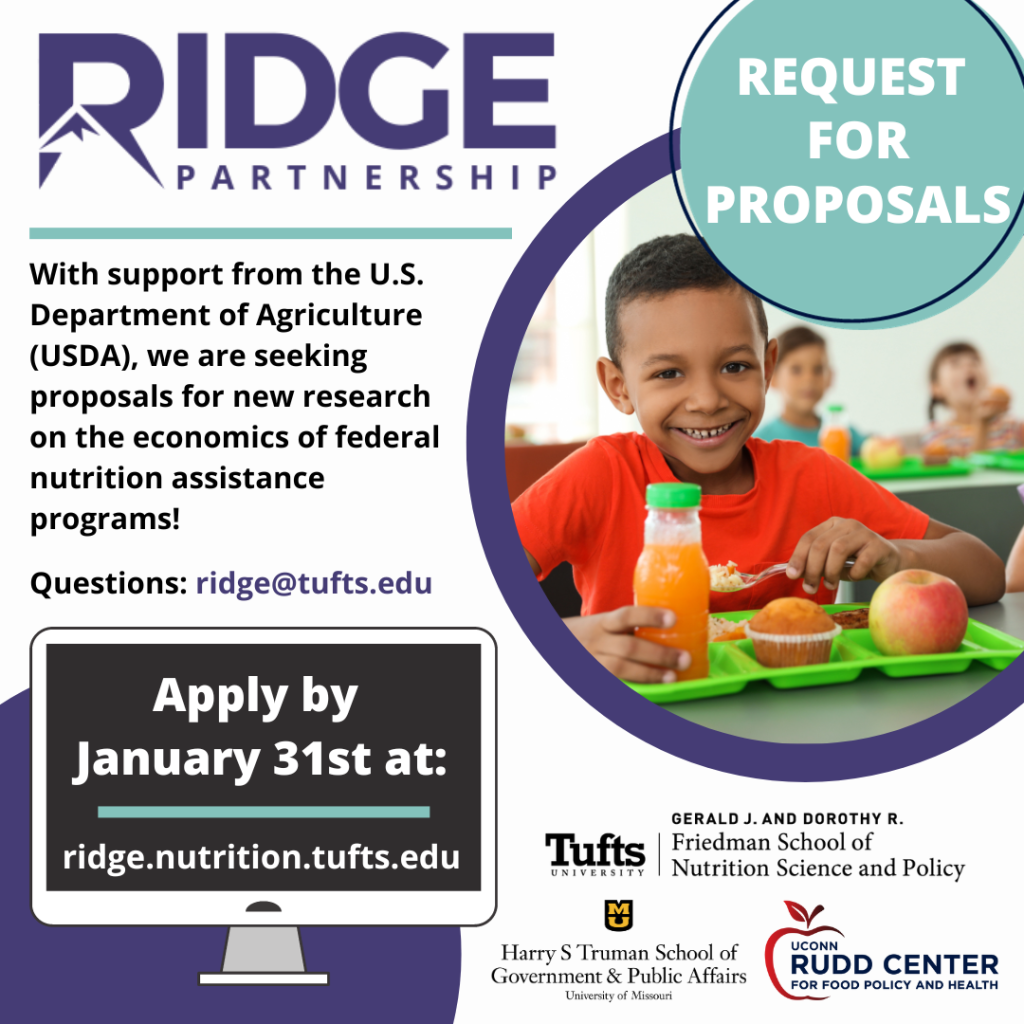The RIDGE Partnership is pleased to invite proposals for new research on the economics of federal nutrition assistance programs. Proposals are due January 31, 2024. The Request for Proposals (.pdf) provides an overview, describes the topic areas, explains the submission process, provides our detailed evaluation criteria, and summarizes key dates. Detailed information is provided on our Information for Applicants page.
With support from the U.S. Department of Agriculture (USDA), the Research Innovation and Development Grants in Economics (RIDGE) Partnership seeks to encourage innovative economic research on domestic nutrition assistance programs and to broaden a network of researchers applying their expertise to USDA topics.
Research Projects Funded in 2023
For the 2023 cycle, the program announced eight research grant awards, reflecting a wide range of nutrition assistance program topics.
Five grants are for standard research projects (up to $75,000 each):
- Dr. Christopher E. Anderson. Evaluating Associations of WIC Food Benefit
Redemption with Child Dietary Intake and Continued WIC Participation. Public Health Foundation Enterprises. Area of focus: WIC. - Dr. Wenhui Feng. Did Pandemic-EBT Benefits Improve Dietary Quality? Tufts
University School of Medicine. Area of focus: School meals. - Dr. Sarah Hamersma. How Does SNAP Access Prior to Pregnancy Affect Maternal and Infant Health Outcomes? Syracuse University School of Citizenship and Public Affairs. Area of focus: SNAP.
- Dr. Susan L. Matias Medrano. Maternal WIC Participation During Pregnancy and
Gestational Weight Gain. University of California, Berkeley Nutritional Sciences and Toxicology. Area of focus: WIC. - Dr. Jesse Rothstein. Student Access to SNAP Benefits During the Transition to
College. University of California, Berkeley School of Public Policy. Area of focus: SNAP.
Three grants are for dissertation research (up to $25,000 each):
- Katherine Engel. PhD Candidate. The Effect of SNAP Benefit Distribution on Subjective Well-Being. American University. Area of focus: SNAP.
- William Clay Fannin. PhD Candidate. Exploring the Effects of SNAP Certification Interview Waivers on Program Participation Outcomes. Syracuse University. Area of focus: SNAP.
- Erik James. PhD Candidate. Human Discretion in the SNAP Program: How Discretion Affects Case Outcomes and Modifies the Impacts of Interview and Recertification Waivers. University of Pennsylvania. Area of focus: SNAP.
All proposals were reviewed independently by an external expert review committee that assessed the proposal significance, quality of the research methods and data, and policy relevance. Additional consideration was given to the mix of topics and USDA research priority areas. Award decisions were based on the expert reviews and input from USDA’s Economic Research Service. Additional information about the program is available online at ridge.nutrition.tufts.edu.
See our archives for past announcements.

